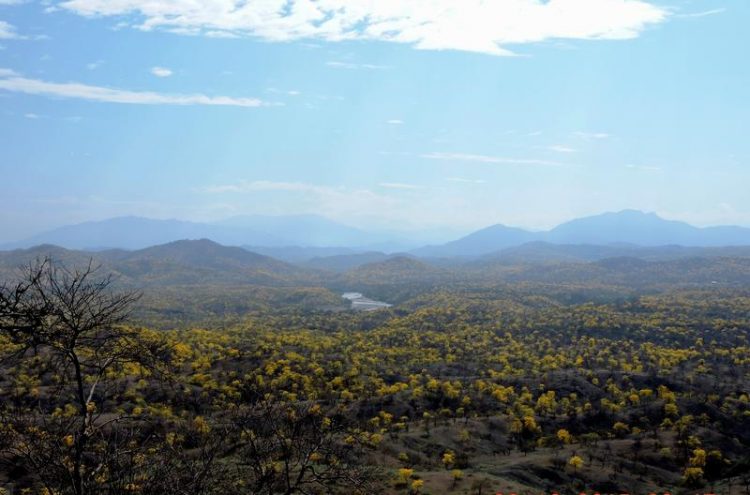Ecuador: Deforestation destroys more dry forest than climate change

Most of Ecuador's dry forests are located in the southwest of the country, in the Tumbes-Chocó-Magdalena region. Photo: P. Hildebrandt/ TUM
A large proportion of Ecuador's rare dry forests are located in the southwest of the country, in the Tumbes-Chocó-Magdalena region. These forests provide not only wood and non-wood products, but also important ecosystem services that regulate the water balance and protect the soil from erosion.
However, the area suffers a high loss of habitat due to deforestation for more arable and pasture land. This exacerbates the negative effects of climate change, such as temperature increases.
In cooperation with scientists from the Thünen-Institut and the Ecuadorian Universidad Técnica Particular de Loja, a team from TUM compared the predicted loss of area of tree species caused by deforestation on the one hand and by predicted forest losses in an extreme climate change scenario on the other.
“We have evaluated 660 data sets on the occurrence of 17 characteristic species of dry forests in the south of Ecuador,” explain first author Carlos Manchego and Patrick Hildebrandt from the Chair of Silviculture at TUM – “in order to estimate both potential threats, we have compared the forecast annual rates of losses. However, it is important that the results are not transferable to other tree species in other regions.”
Losses from conversions in the period 2008 to 2014, especially for agricultural and pasture land, averaged 71 square kilometres per year for all species in the study area. The predicted loss of species area in the climate change scenario was only 21 square kilometres per year.
Recommendations for more effective forest protection and sustainable land use
One unexpected outcome was the different displacement directions of tree species due to climate change. While some species migrate to the north, other species find their future distribution focus more to the south. This leads to a trend towards mixing tree species with hitherto unknown effects on the functionality and stability of future forest communities,” says Hildebrandt. “At the same time, grubbing-up starts in the higher altitudes, because it's easier to grow something like corn there.”
According to Hildebrandt, it is important for efficient planning, the implementation of protective measures and sustainable land use to prioritise the measures according to such threats and weak points. A distinction must be made between the potential threats posed by climate change and deforestation. With the study “PLOS One” we wanted to provide a scientific frame of reference to identify the lesser evil and make targeted recommendations”.
However, regardless of the conservation strategy, these objectives required the participation of both private landowners and local communities.
Publication:
Carlos E. Manchego, Patrick Hildebrandt, Jorge Cueva, Carlos Ivan Espinosa, Bernd Stimm, Sven Guenter: Climate change versus deforestation: Implications for tree species distribution in the dry forests of southern Ecuador, PLOSone 12/2017.
https://doi.org/10.1371/journal.pone.0190092
Contact:
Dr. Patrick Hildebrandt, PD Dr. Sven Günter
Technische Universität München
Wissenschaftszentrum Weihenstephan für Ernährung, Landnutzung und Umwelt
Forschungsdepartment Ökologie und Ökosystemmanagement
Lehrstuhl für Waldbau
Tel: +49 8161 714690
hildebrandt@tum.de
http://waldbau.wzw.tum.de
https://www.tum.de/nc/en/about-tum/news/press-releases/detail/article/34428/
Media Contact
All latest news from the category: Agricultural and Forestry Science
Newest articles

A ‘language’ for ML models to predict nanopore properties
A large number of 2D materials like graphene can have nanopores – small holes formed by missing atoms through which foreign substances can pass. The properties of these nanopores dictate many…

Clinically validated, wearable ultrasound patch
… for continuous blood pressure monitoring. A team of researchers at the University of California San Diego has developed a new and improved wearable ultrasound patch for continuous and noninvasive…

A new puzzle piece for string theory research
Dr. Ksenia Fedosova from the Cluster of Excellence Mathematics Münster, along with an international research team, has proven a conjecture in string theory that physicists had proposed regarding certain equations….



